
Leopold succeeded in 1830 as the Grand Duke of Baden, reigning until his death in 1852.
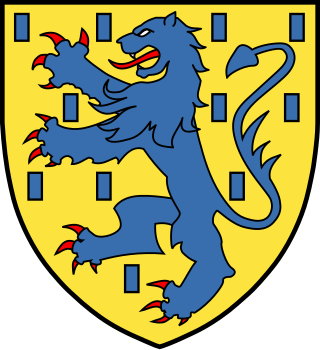
Solms-Laubach was a County of southern Hesse and eastern Rhineland-Palatinate, Germany. The House of Solms had its origins in Solms, Hesse.

Solms-Braunfels was a County and later Principality with Imperial immediacy in what is today the federal Land of Hesse in Germany.

The House of Castell is a German noble family of mediatised counts of the old Holy Roman Empire. In 1901, the heads of the two family branches, Castell-Castell and Castell-Rüdenhausen, were each granted the hereditary title of Prince by Luitpold, Prince Regent of Bavaria.

Anhalt-Bernburg was a principality of the Holy Roman Empire and a duchy of the German Confederation ruled by the House of Ascania with its residence at Bernburg in present-day Saxony-Anhalt. It emerged as a subdivision from the Principality of Anhalt from 1252 until 1468, when it fell to the Ascanian principality of Anhalt-Dessau. Recreated in 1603, Anhalt-Bernburg finally merged into the re-unified Duchy of Anhalt upon the extinction of the line in 1863.

The House of Schwarzburg was one of the oldest noble families of Thuringia, which is in modern-day central Germany. Upon the death of Prince Friedrich Günther in 1971, a claim to the headship of the house passed under Semi-Salic primogeniture to his elder sister, Princess Marie Antoinette of Schwarzburg who married Friedrich Magnus V, Count of Solms-Wildenfels. Reigning over the County of Schwarzburg and founded by Sizzo I of Schwarzburg, the family split in the 16th century into the lines of Schwarzburg-Sondershausen and Schwarzburg-Rudolstadt, with the Sondershausen line dying out in 1909.

Friedrich Günther, Prince of Schwarzburg was the final head of the House of Schwarzburg and heir to the formerly sovereign principalities of Schwarzburg-Rudolstadt and Schwarzburg-Sondershausen.
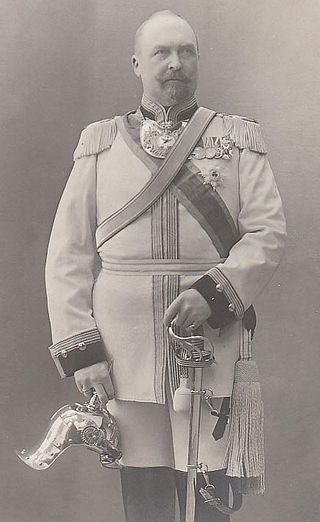
Günther Sizzo, Prince of Schwarzburg was the head of the House of Schwarzburg and pretender to the principalities of Schwarzburg-Rudolstadt and Schwarzburg-Sondershausen.

Georg Albert, Prince of Schwarzburg-Rudolstadt was the penultimate sovereign prince of Schwarzburg-Rudolstadt.
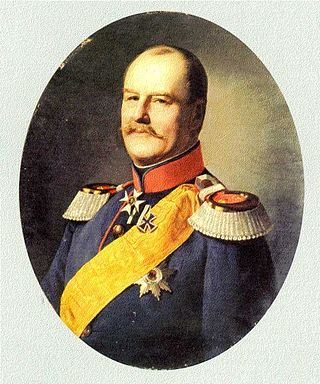
Albert, Prince of Schwarzburg-Rudolstadt was a sovereign prince of Schwarzburg-Rudolstadt.
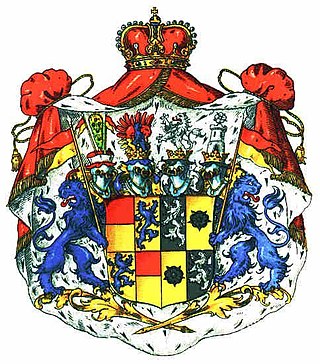
Solms-Baruth was a Lower Lusatian state country, from 16th century until 1945.

Princess Marie of the Netherlands was the fourth child and younger daughter of Prince Frederick of the Netherlands and wife of William, 5th Prince of Wied. She was the mother of William, Prince of Albania. She was the last surviving grandchild of William I of the Netherlands.

Duke Eugen of Württemberg was a German prince and a General of Infantry in the Imperial Russian Army during the Napoleonic Wars.

Marie Antoinette, Princess of Schwarzburg was the eldest child of Sizzo, Prince of Schwarzburg.

Frederick V Louis William Christian, Landgrave of Hesse-Homburg was from 1751 to his death landgrave of Hesse-Homburg.

The House Order of Albert the Bear was founded in 1836 as a joint House Order by three dukes of Anhalt from separate branches of the family: Henry, Duke of Anhalt-Köthen, Leopold IV, Duke of Anhalt-Dessau, and Alexander Karl, Duke of Anhalt-Bernburg.
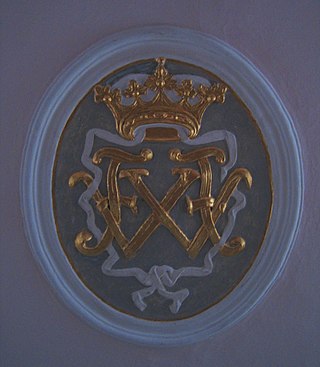
Prince Frederick William of Solms-Braunfels was the first Prince of Solms-Braunfels. He was the son of Count Wilhelm Moritz of Solms-Braunfels (1651–1724) and his wife Princess Magdalene Sophie of Hesse-Homburg (1660–1720), a daughter of William Christoph, Landgrave of Hesse-Homburg, and his first wife Princess Sophia Eleonore of Hesse-Darmstadt.

Günther Friedrich Karl II of Schwarzburg-Sondershausen was the ruling Prince of Schwarzburg-Sondershausen following his father's abdication in 1835 until his own abdication in 1880. After Schwarzburg-Sondershausen joined the North German Confederation, he joined the Royal Prussian Army, and in 1879 became General of the Infantry.





















